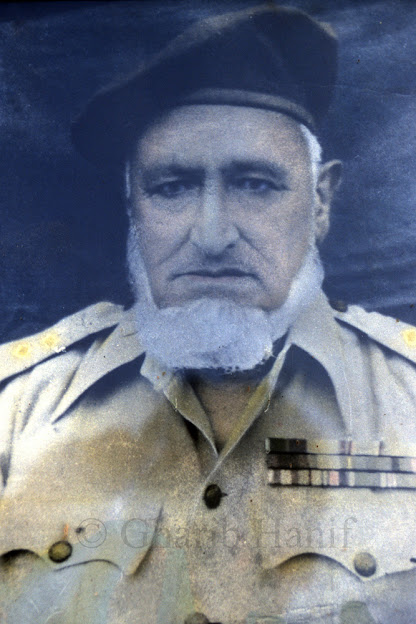Hast-o-Bood Part-17
Chapter Three
The meaning of the word Rajput and the initial conditions of the Mangral nation
The meaning of the word Rajput and the initial conditions of the Mangral nation
He was so fascinated by the climate and landscapes that he gave up his intention to return and set up his own government here. [1] After his death, his only son, Raja Hindu Dev Sarir Rai, became king. Raja Hindu Dev was a Dharma Veda and a princely ruler. He was a Honroable Ruler. Kotli Mangaralan was also settled in the name of his father and this was the foundation of his kingdom during his reign.
On his death, his promising crown prince, Sahanspal, succeeded Paul Kingdom. [2] This young man was also very popular among his subjects due to his strategy, generosity and generosity. During his rule, he established Mouza Sahansa Sarsawa in his name. He inherited Gyan Dhan and Dharma Dirta from his father. So he continued his research in this regard in view of his tendencies. By the year 1364, India had become enlightened with the radiance of Islam. Since the state of Kashmir was in the northwest of India and was remote, the teachings of Islam began to spread in it around 1339 AD. On the other hand, Ranchen Chak came to Kashmir from Tibet, converted to Islam at the hands of Bulbul Shah and became the ruler of Sadruddin, ending the rule of Raja Sahdev. As a result, the vast majority of his subjects converted to Islam. During the reign of Sultan Sikandar Shah, the spread of Islam in the state of Jammu and Kashmir took place with full vigor. And so in every part of the state, following the ruling class, their subjects also became Muslims in droves.
Raja Sahanspal and his family also converted to Islam. And thus the ruling family became the custodians of Islamic traditions in and around Kotli. [3]
Mangral Ruler was the great at that time. Later, due to the invasion of the Afghans and their supremacy over the state, the Mangral tribe settled in their settled tehsil Kotli in a normal state. Until Maharaja Ranjit Singh's rule over the Punjab was established. The Maharaja's rule over the Gujarat district came in 1890. And in April 1811, [4] he carried out the first massacre in Bhimber and Rajouri areas of the state of Jammu and Kashmir. Then in the year 1812 AD, Maharaja Ranjit Singh, under the leadership of his Crown Prince Kanwar Kharak Singh, launched a campaign against Bhimber and Rajouri, the rulers of Raja Sultan Khan. The Sikhs succeeded in this campaign. But after the withdrawal of the Sikh army, the Afghan chief raised his head again and recaptured his former territory. Therefore, Maharaja Ranjit Singh formed a Great Force under the supervision of Misrdiwan Chand and on 23rd June, 1819, he took possession of all the hills and southern gates of Rajouri and Poonch Range Pir Panjal.
Later, on 5 July 1819, the Maharaja's forces captured the entire Kashmir Valley, defeating the Afghan army and forcing Jabir Khan, the governor of Kashmir appointed by Khan Muhammad Azam, to flee. Maharaja Ranjit Singh appointed Moti Ram's son Diwan Mohkam Chand as the Governor of Kashmir. And so the area came under its complete control.
[1] ... History of Nations Poonch Part II Page No. 181, Author Muhammaduddin Fouq
[2] ... History of Nations Poonch Part II Page No. 181, Author Muhammaduddin Fouq
[3] History of Rajgan Jammu and Kashmir Page No. 13 to 78, author Thakur Kahan Singh.
[4] The Punjab Series Volume Two, Year 1896
[5] Origin of the Sikh Power in the Punjab, by Henry T. Prince, page sixty-three, sixty-six, better.
[6] History of the Nations of Kashmir Volume III, Page No. 98, Muhammaduddin Fouq
[7] The Punjab Series, Volume Two of the Year 1889, Origin of the Sikh Powers the Punjab, pages 97 and 98, by Henry T. Prince
[2] ... History of Nations Poonch Part II Page No. 181, Author Muhammaduddin Fouq
[3] History of Rajgan Jammu and Kashmir Page No. 13 to 78, author Thakur Kahan Singh.
[4] The Punjab Series Volume Two, Year 1896
[5] Origin of the Sikh Power in the Punjab, by Henry T. Prince, page sixty-three, sixty-six, better.
[6] History of the Nations of Kashmir Volume III, Page No. 98, Muhammaduddin Fouq
[7] The Punjab Series, Volume Two of the Year 1889, Origin of the Sikh Powers the Punjab, pages 97 and 98, by Henry T. Prince
Note: Blogger does not necessarily agree with the contents of the book.



It seems there is a mistake of date in Para 2 line 8 "by the year 1964 india has become enlightened with the radiance of islam".
ReplyDelete